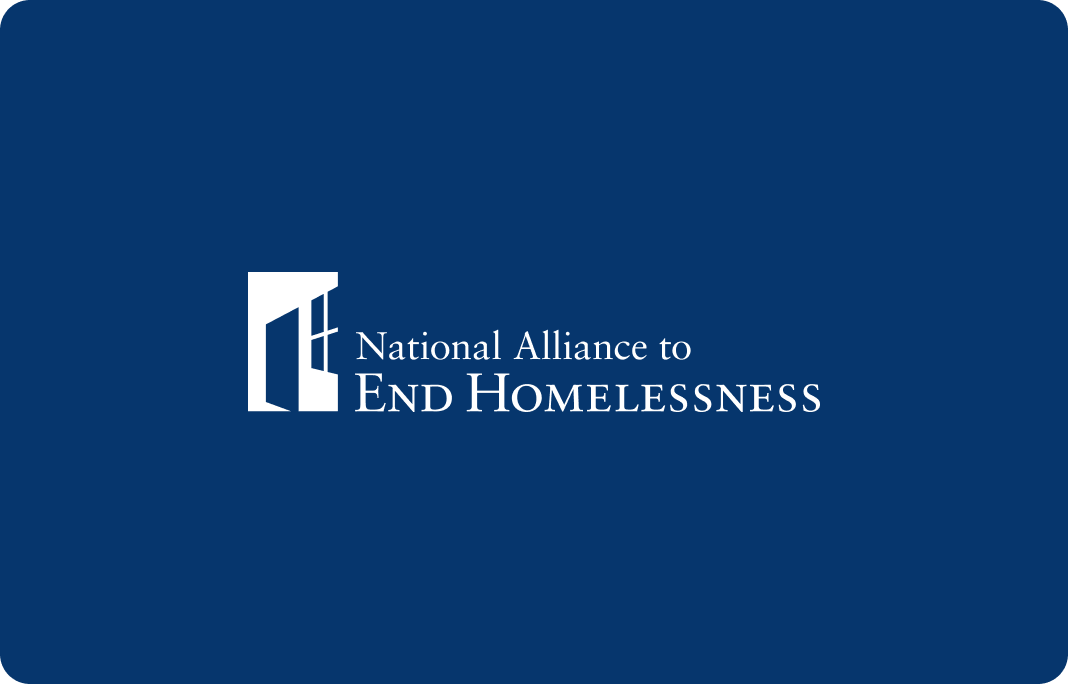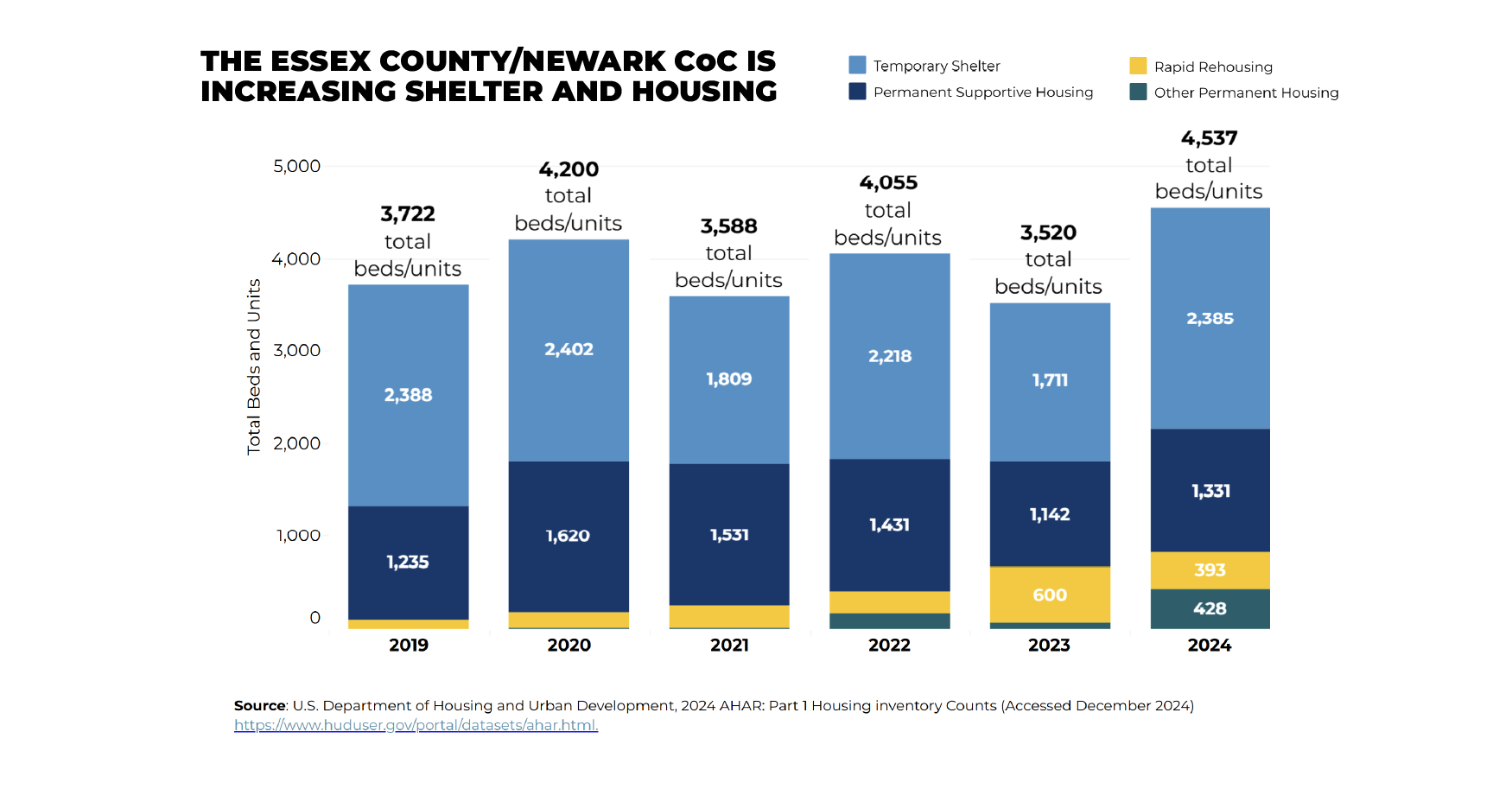Homelessness in America is largely a gendered phenomenon. Men are the overwhelming majority individuals counted in the HUD-required annual Point-in-Time Count. They are also more likely than women to be unsheltered. Ending homelessness requires better understanding of the issues that cause so many men to become homeless, and the particular housing, employment, and services solutions that would best end their homelessness.
While the majority of individuals who experience homelessness are men, too many women also find themselves in these circumstances. As with men, ending homelessness for women will require an understanding of the unique reasons they become homeless, how homelessness affects them, and what the solutions to their problems are.
This brief analyzes population and unsheltered data through the lens of gender, offering a fuller understanding of male and female homelessness.
Homelessness Among Men and Women at a Point-in-Time
Sixty-seven percent of all people experiencing homelessness within the 2018 Point-in-Time (PiT) Count are individuals. There are 260,284 men compared to 106,119 women. Thus, men are the majority of individuals experiencing homelessness (70 percent) followed by women (29 percent). The final 1 percent are transgender and non-binary individuals discussed in the first installment of this series.
Some parts of the country skew even higher than the national average for individual male homelessness. This is true in 27 states and Puerto Rico. Examples include the following:
| State | Percent of the Individual Population that Is Male |
| Puerto Rico | 82% |
| Louisiana | 82% |
| Rhode Island | 76% |
| Connecticut | 75% |
At a more local level, men are the majority of individuals experiencing homelessness in almost all Continuums of Care (CoCs): 97 percent of them. There are several CoCs that have very few women as compared to men experiencing homelessness. The most dramatic of these differences is in the Youngstown/Mahoning County, OH CoC where just 8 percent of the homeless adult population is female, and 92 percent is male.
Importantly, there are some states where the percentage of individual women (versus men) who are homeless is significantly higher than it is nationally. The following states had female homelessness percentages well above the 29 percent national average:
| State | Percent of the Individual Population that are Women |
| Maine | 38% |
| Alaska | 37% |
| Missouri | 37% |
| North Dakota | 37% |
| Arkansas | 36% |
| Hawaii | 34% |
| Vermont | 34% |
| Oregon | 34% |
While this pattern of a majority male homeless individual population holds true across most regions of the country, there are eleven CoCs where most of the individuals counted were women. They tend to have relatively small numbers of individuals experiencing homelessness:
| CoC | Total Homeless Count | Percent of the Individual Population that are Women |
| MD-510 Garrett County | 8 | 88% |
| MI-523 Eaton County | 10 | 70% |
| AR-505 Southeast Arkansas | 53 | 66% |
| KS-505 Overland Park, Shawnee/Johnson County | 64 | 63% |
| MA-517 Somerville | 100 | 56% |
| PA-511 Bristol, Bensalem/Bucks County | 194 | 56% |
| AR-512 Boone, Baxter, Marion, Newton Counties | 42 | 55% |
| NY-514 Jamestown, Dunkirk/Chautauqua County, NY | 94 | 53% |
| IL-515 South Central Illinois | 44 | 52% |
| MO-500 St Louis County | 258 | 52% |
| MA-502 Lynn | 128 | 49% |
Unsheltered Homelessness
Unsheltered homelessness has been on the rise over the last two years. Nationally, men are only slightly more likely than women to be unsheltered. Forty-nine percent of individual men are unsheltered compared to 45 percent of women.
However, this delicate balance doesn’t exist everywhere. There are some parts of the country where individual men are far more likely to be unsheltered than their female counterparts. Here are a few examples:
| Jurisdiction | Percent of Individual Men Unsheltered | Percent of Individual Women Unsheltered |
| Texas | 58% | 42% |
| Illinois | 32% | 18% |
| Colorado | 41% | 51% |
| Prince George’s County, MD | 50% | 18% |
| Marion County, FL | 68% | 36% |
| Las Vegas/Clark County, NV | 63% | 78% |
| Rockland County, NY | 14% | 56% |
At a local level, there are 120 CoCs in 30 states where 50 percent or more of individual homeless men are unsheltered. In 49 of those CoC’s, the share of men experiencing unsheltered homelessness is 75% or greater.
Unsheltered homelessness also affects women, sometimes more than men. In 14 states, the percentage of women who are unsheltered outpaces the percentage of men (although as mentioned, the actual number of men is still much higher than that of women).
| State | Percent of Individual Women Unsheltered | Percent of Men Unsheltered |
| Colorado | 51% | 41% |
| Delaware | 16% | 12% |
| Hawaii | 71% | 70% |
| Idaho | 44% | 39% |
| Kansas | 24% | 23% |
| Massachusetts | 15% | 14% |
| Maryland | 32% | 31% |
| Maine | 7% | 6% |
| Nebraska | 10% | 7% |
| New Hampshire | 18% | 17% |
| Nevada | 67% | 56% |
| Ohia | 18% | 17% |
| South Carolina | 40% | 35% |
| Tennessee | 41% | 36% |
There are 97 CoCs in which more than half of individual homeless women are unsheltered. In 78 of those jurisdictions, 75 percent or more of the individual homeless women are unsheltered.
Various studies on unsheltered homelessness indicate a multitude of outcomes like long-term homelessness, mortality, and poor health. While men are more likely to be unsheltered and have elevated risks of mortality, women who are unsheltered have a much higher risk of premature mortality largely due to mental health and chronic health issues (Montgomery, Szymkowiak, & Culhane, 2017). The rates of victimization and assault, including robbery, physical abuse, and sexual assault are much higher for women than men (Montgomery, Szymkowiak, & Culhane, 2017), (Nyamathi, Leake, & Gelberg, 2000).
Rate of Homelessness
The rate of homelessness per 10,000 people is another important indicator to evaluate when trying to understand the scope of homelessness in the U.S. Nationally, 21.5 men and 8.3 women experience homelessness per 10,000 people in the general population. The eight places with the highest rates of men experiencing homelessness are also the places with the highest rates of women. Washington, D.C. has the highest rate of homelessness among individual men at 104.6, double the next highest rate in California. The rate for individual homeless women in D.C. is 34.4 which is almost double the rate for California at 19.9.
| State | Male Homelessness Rate | Female Homelessness Rate |
| D.C. | 104.6 | 34.4 |
| CA | 52.5 | 19.9 |
| HI | 48.5 | 25.2 |
| OR | 46.8 | 23.4 |
| NV | 45.8 | 17.6 |
| WA | 40.1 | 17.6 |
| NY | 36.5 | 15 |
| AK | 31 | 20.2 |
Discussion
Focusing on equity and fairness requires asking the question of why men are so overrepresented in the homeless population.
Many of the answers are found outside of the homelessness system. For example, men are overrepresented in the criminal justice system and, “roughly 48,000 people entering shelters every year are coming nearly directly from prisons or jails” (Cho, 2015). Another example is the education system, which many experts suggest is failing boys who are more likely to drop out and experience suspensions/expulsions (GAO, 2018; NCES, Fast Facts 2019). Limited educational experience results in poor employment prospects, increasing the risk of poverty and homelessness (See NCES, Employment and Unemployment Rates, 2019).
But many of the answers may lie within the homelessness system, in the setting of priorities and the allocation of resources. Equity is not the only consideration of homelessness systems, which often and quite rationally prioritize things like vulnerability age, or risk of violence as opposed to serving men and women equally. But collecting, analyzing and using data to examine disparities and consider whether a proper level of assistance is being provided to over-represented and/or under-served groups may result in a better balance and a more equitable community system. Questions that communities might ask themselves in this process include the following:
- Can we do more to serve individual adults, especially men?
- Are we accurately counting different gender groups? Is there something about our practices that leads us to count more men or women?
- Does the unsheltered data tell us anything about barriers or ineffective programming for males or females that results in them not being sheltered?
- What differences in approach need to be taken for males and females?
- Once disparities are identified, are we moving beyond the data to get information directly from consumers as to their needs?
The issues of equity and effectiveness in a vastly under-resourced system are not easily addressed; nor is there any universally correct approach. But these are questions that deserve to be considered, and examination of data is one way to begin that community conversation.
About this Data
The data in this brief comes from HUD’s 2018 Point-in-Time Count. It is collected by CoCs, informing local efforts and being aggregated into annual report published by HUD. The information is self-reported by consumers or based on observational data by a volunteer conducting surveys for the Count. The data may also be extrapolated to estimate a total number of people experiencing homelessness in areas too large for a full street count.
Because CoC’s report the data to HUD in aggregate, there are limitations on the ability to fully analyze the data at the intersections of identity. For example, we are unable to produce analysis that focuses on black women or men over the age of 55.
This, however, is the most comprehensive country-wide data available on men and women experiencing homelessness. It should be used to foster a discussion in each community and be used as a conversation piece for reaching out to experts in the area.
Works Cited
Cho, R. (2015, November 18). We Can Break the Cycle of Criminal Justice Involvement. Retrieved from United States Interagency Council on Homelessness: https://www.usich.gov/news/we-can-break-the-cycle-of-homelessness-and-criminal-justice-system-involvem/
Flaming, D., Burns, P., and Carlen, J. (2018). Escape Routes: Meta-Analysis of Homelessness in Los Angeles County. Los Angeles: Economic Roundtable.
Government Accountability Office. (2018). K-12 Education: Discipline Disparities for Black Students, Boys, and Students with Disabilities.
Mayer, C., and Reichert, J. (2018). The Interesection of Homelessness and The Criminal Justice System. Chicago: Illinois Criminal Justice Information Authority.
Montgomery, A. E., Szymkowiak, D., and Culhane, D. P. (2017). Gender Differences in Factors Associated with Unsheltered Status and Increased Risk of Premature Mortality among Individuals Experiencing Homelessness. Women’s Health Issues, 256–263.
Montgomery, A. E., Szymkowiak, D., Marcus, J., Howard, P., and Culhane, D. P. (2016). Homelessness, Unsheltered Status, and Risk Factors for Mortality: Findings From the 100,000 Homes Campaign. Public Health Reports, 765-772.
National Alliance to End Homelessness. (2019, May 6). State of Homelessness. Retrieved from National Alliance to End Homelessness: https://endhomelessness.org/homelessness-in-america/homelessness-statistics/state-of-homelessness-report/
National Center for Education Statistics. (2019). Fast Facts: Dropout Rates.
National Center for Education Statistics. (2019). Employment and Unemployment Rates by Educational Attainment.
Nyamathi, A. M., Leake, B., and Gelberg, L. (2000). Sheltered Versus Nonsheltered Homeless Women: Differences in Health, Behavior, Victimization, and Utilization of Care. Journal of General Internal Medicine, 565–572.
Stay Updated: Solutions, Stories, and Ways to Make an Impact
Sign up to receive updates on the Alliance’s work, including the latest research, advocacy efforts, and real stories of progress — plus ways you can help drive lasting change.












